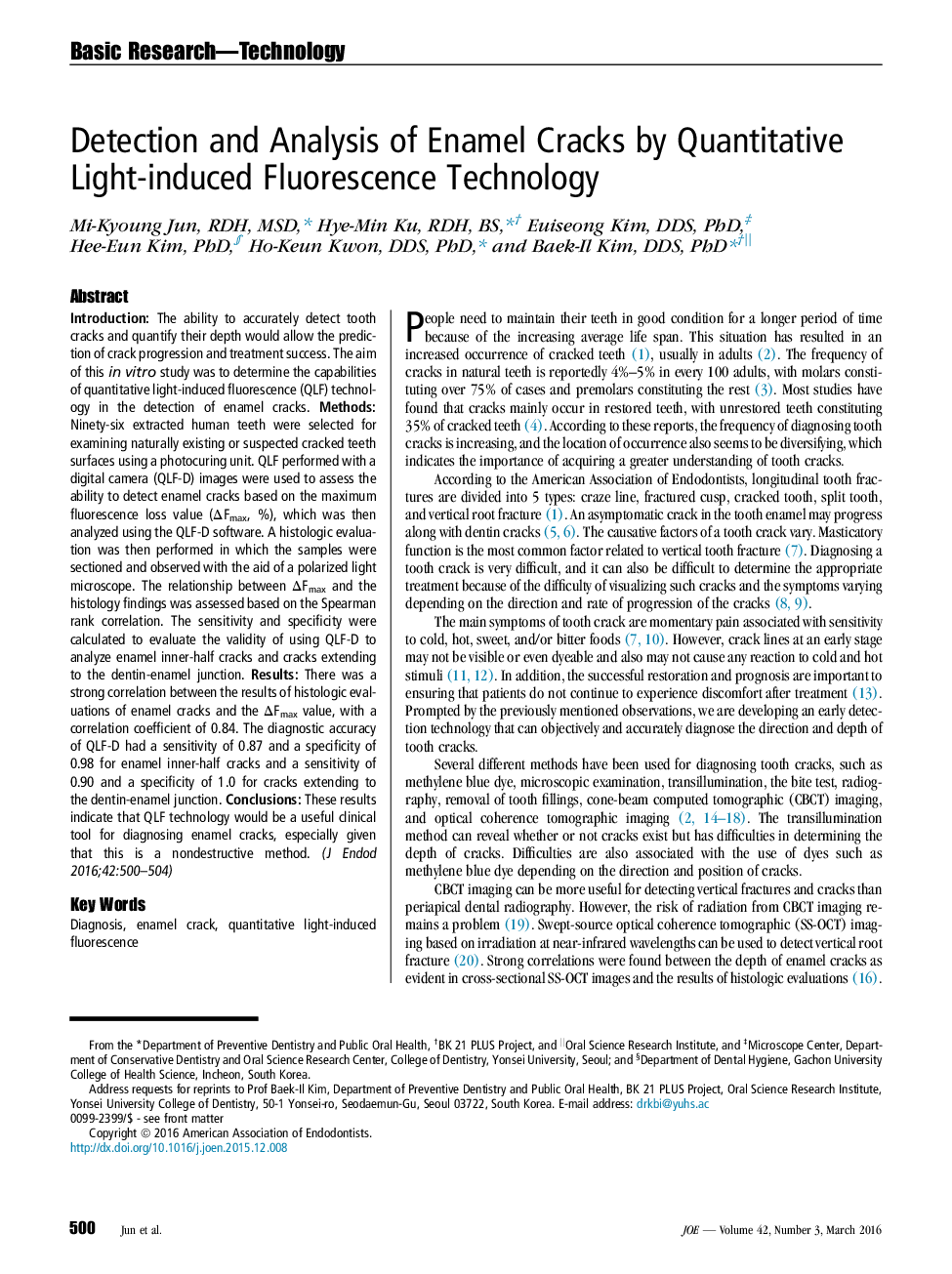| کد مقاله | کد نشریه | سال انتشار | مقاله انگلیسی | نسخه تمام متن |
|---|---|---|---|---|
| 3147943 | 1197382 | 2016 | 5 صفحه PDF | دانلود رایگان |
• Diagnosing a tooth crack is very difficult, and it can also be difficult to determine the appropriate treatment because of the difficulty of visualizing such cracks and the symptoms varying depending on the direction and rate of progression of the cracks.
• Quantitative light-induced fluorescence with a digital camera (QLF-D) cannot only detect enamel cracks but also quantify their depth.
• QLF-D is a useful tool for the diagnosis of enamel cracks by visualizing and quantifying its severity, which aids in helping prevent tooth fracture and loss.
IntroductionThe ability to accurately detect tooth cracks and quantify their depth would allow the prediction of crack progression and treatment success. The aim of this in vitro study was to determine the capabilities of quantitative light-induced fluorescence (QLF) technology in the detection of enamel cracks.MethodsNinety-six extracted human teeth were selected for examining naturally existing or suspected cracked teeth surfaces using a photocuring unit. QLF performed with a digital camera (QLF-D) images were used to assess the ability to detect enamel cracks based on the maximum fluorescence loss value (ΔFmax, %), which was then analyzed using the QLF-D software. A histologic evaluation was then performed in which the samples were sectioned and observed with the aid of a polarized light microscope. The relationship between ΔFmax and the histology findings was assessed based on the Spearman rank correlation. The sensitivity and specificity were calculated to evaluate the validity of using QLF-D to analyze enamel inner-half cracks and cracks extending to the dentin-enamel junction.ResultsThere was a strong correlation between the results of histologic evaluations of enamel cracks and the ΔFmax value, with a correlation coefficient of 0.84. The diagnostic accuracy of QLF-D had a sensitivity of 0.87 and a specificity of 0.98 for enamel inner-half cracks and a sensitivity of 0.90 and a specificity of 1.0 for cracks extending to the dentin-enamel junction.ConclusionsThese results indicate that QLF technology would be a useful clinical tool for diagnosing enamel cracks, especially given that this is a nondestructive method.
Journal: Journal of Endodontics - Volume 42, Issue 3, March 2016, Pages 500–504
